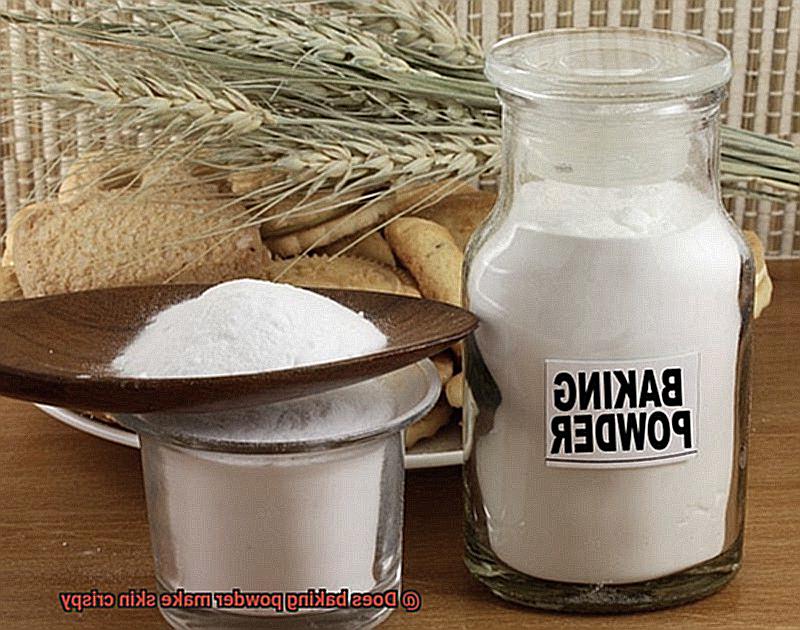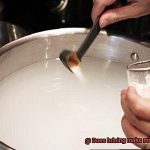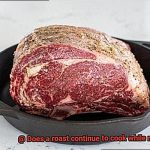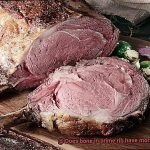Are you a die-hard fan of the crispy and crunchy texture of fried foods? Do you believe that baking powder can make your fried chicken or fish skin extra crispy? Well, let’s put this claim to the test and explore the science behind it.
Baking powder is a common leavening agent used in baking to help doughs and batters rise. However, some cooks swear by adding it to their flour mixture for an extra crunchy crust when frying. The idea behind this technique is that baking powder creates minuscule bubbles in the batter, which expand and burst during frying, resulting in a crispy texture.
But not all types of baking powder are created equal, and using too much can ruin your fried food’s texture. Some chefs argue that the secret to achieving perfectly crispy skin lies in the frying temperature and technique rather than the ingredients used in the batter.
In this blog post, we’ll delve deeper into the science behind baking powder’s role in creating crispy skin, how to use it effectively without overdoing it, and tips for getting perfect fried foods every time. Whether you’re a seasoned home cook or new to the kitchen, don’t miss out on this exciting journey into the world of crispy fried foods.
Contents
What is Baking Powder?
Baking powder is a magical ingredient that has the power to transform your baked goods into light and fluffy delicacies. It’s a leavening agent made up of baking soda, cream of tartar, and sometimes cornstarch. When combined with moisture and heat, it releases carbon dioxide gas, creating air pockets in the dough or batter that makes it rise and expand.
There are two types of baking powder: single-acting and double-acting. Single-acting baking powder activates once when it comes into contact with liquid. In contrast, double-acting baking powder works twice – first when it comes into contact with liquid, and then again when exposed to heat.
It’s crucial to use the correct amount of baking powder in your recipe; too little can result in a flat and dense finished product, while too much can cause the dough or batter to rise too quickly and then collapse, resulting in an unappealing texture.
Baking powder is commonly used in recipes that require quick rising, such as cakes, muffins, biscuits, and pancakes. But did you know that it can also be used as a coating for fried foods? When mixed with flour and spices and used as a coating for fried foods, baking powder creates a light and airy texture that results in a crispy exterior that’s hard to resist. However, keep in mind that cooking method, temperature, and type of oil also play a role in creating the perfect crispy exterior.
In addition to creating a crispy texture, baking powder can also help with browning. When the baking powder reacts with moisture in the food, it creates a chemical reaction that results in the Maillard reaction – the same process that occurs when foods are browned in the oven or on the stovetop. The result is a rich golden brown color that adds to the overall appeal of the dish.
How Does Baking Powder Work?
If you’re a fan of crispy chicken skin, you may be surprised to learn that baking powder is the key ingredient to achieving that golden crunch. But how exactly does baking powder work its magic? As an expert on the topic, let me break it down for you.
Baking powder is a leavening agent that helps dough and batter rise by releasing carbon dioxide gas when mixed with water or heat. It’s made up of bicarbonate of soda, cream of tartar, and cornstarch. When baking powder is added to chicken skin, the bicarbonate of soda reacts with the moisture in the skin, causing it to puff up and expand. This creates a crispy and crunchy texture on the outside while keeping the meat inside juicy and tender.
However, not all baking powders are created equal. Double-acting baking powders release carbon dioxide gas twice – once when mixed with liquid and again when exposed to heat. This second reaction is what makes double-acting baking powder particularly effective at creating crispy chicken skin.
It’s also important to choose the right type of baking powder. Some commercial baking powders contain aluminum, which can affect the taste and should be avoided. Look for aluminum-free options or make your own baking powder by combining cream of tartar and baking soda in a 1:2 ratio.
Now that you know how baking powder works, it’s time to put it into action. Mix your favorite seasoning with baking powder and coat your chicken pieces before frying or baking. For an extra crispy coating, let the chicken sit in the fridge for a few hours before cooking.
Benefits of Using Baking Powder for Crispy Skin
Don’t settle for less when baking powder can take your dishes to new heights. As a seasoned expert in achieving crispy skin, I can attest to the transformative powers of this leavening agent beyond baking.
Baking powder is a combination of baking soda, cream of tartar, and cornstarch that releases carbon dioxide gas upon heating and mixing with liquid. This results in a light and airy texture, but how does it result in crispy skin?
Let’s delve into the three benefits of using baking powder for crispy skin:
- Draws Out Moisture: Excess moisture on meat’s surface is a barrier to achieving crispy skin. Baking powder comes to the rescue by drawing out moisture from the surface. It then absorbs it, leaving the skin dry and brittle, allowing for better searing and browning when cooking.
- Promotes Browning: Baking powder creates an alkaline environment on the surface of the meat that breaks down proteins and promotes browning. The Maillard reaction gives meats their crisp texture and golden-brown color that we all love.
- Speeds Up Cooking: Baking powder creates even heat distribution on the surface of the meat, which speeds up cooking time while still maintaining flavor and texture.
For best results, use double-acting aluminum-free baking powder and let your meats rest in the refrigerator after seasoning with baking powder before cooking. This allows enough time for the baking powder to work its magic and create an irresistible golden crunch on your chicken skin.
Different Methods to Achieve Crispy Skin
There are a variety of methods to achieve that coveted crunchy texture.
One approach is to cook your meat on high heat for a short period of time. By searing chicken in a hot pan for a few minutes on each side before finishing it off in the oven, you can create a deliciously crispy skin that will leave your taste buds singing.
Another option is to use a dry rub or coating before cooking. This could include a mixture of flour, cornstarch, or breadcrumbs, which will give your dish an added layer of crunch and texture.
But wait, there’s more. You may have heard about using baking powder to achieve crispy skin. While this technique can be effective, it’s important to use it sparingly to avoid any unpleasant taste or texture.
One way to use baking powder is to mix it with salt and rub it onto the skin of your meat before cooking. Alternatively, you can sprinkle it over the meat before cooking. Just be sure to distribute it evenly and use only a small amount.
Tips for Using Baking Powder for Crispy Skin
Achieving crispy skin on chicken or fish can be a challenge, but using baking powder can be a game-changer. Here are five tips to help you use baking powder correctly for maximum crispiness:
Use the right amount
Using too much baking powder can result in a bitter taste and dry texture. To achieve the perfect balance, use no more than one teaspoon of baking powder per four servings of meat.
Rub it in
Mix the baking powder with salt and rub it into the skin of the meat before cooking. This will ensure that the baking powder is evenly coated on the skin, resulting in maximum crispiness.
Let it sit
After rubbing in the baking powder mixture, let the meat sit for at least 30 minutes before cooking. This allows the baking powder to break down the proteins in the skin, creating a crispy texture.
Choose the right cooking method
Baking powder works best with dry-heat cooking methods such as roasting, grilling, or broiling. Avoid using it with wet-heat methods such as steaming or boiling.
Don’t forget to season
While baking powder can help achieve crispy skin, it won’t add any flavor. Add herbs, spices, or marinades to your meat to enhance its taste and create a delicious final product.
The Best Oils to Use with Baking Powder
The key to success lies in choosing the right oil. Whether you’re frying up chicken, fish, or vegetables, selecting the right oil can make all the difference in achieving that coveted crunch.
First on our list is vegetable oil. This tried-and-true oil has a high smoke point, making it perfect for high-heat cooking without burning. Its neutral flavor won’t overpower your food, allowing your other ingredients to shine.
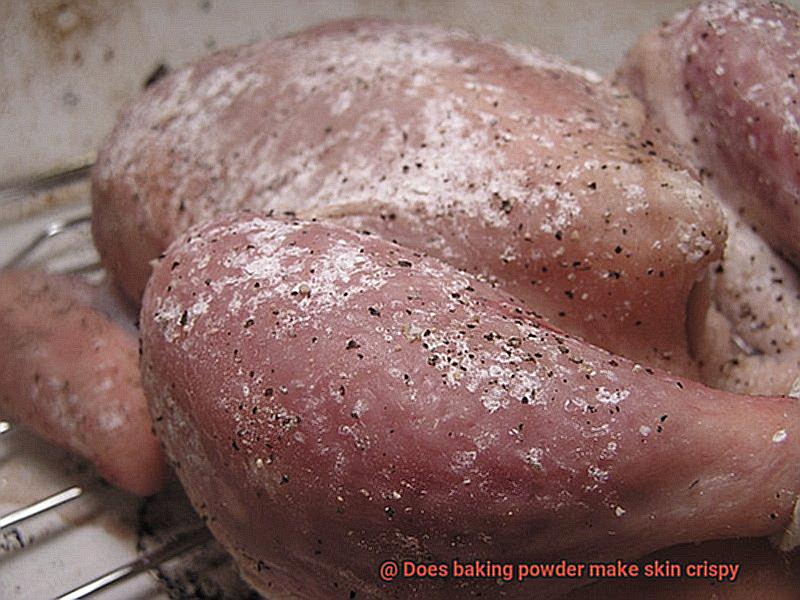
If you’re looking for a healthier option, canola oil is a great choice. Similar to vegetable oil but with less saturated fat, it has a mild flavor that won’t detract from your dish’s overall taste.
For those seeking a nutty flavor, peanut oil is the way to go. Commonly used in Asian cuisine for stir-frying and deep-frying, it has a high smoke point that helps create that crispy texture we all crave.
While not traditionally used for frying, coconut oil can be an exciting option for creating crispy skin. With its high smoke point and slightly sweet flavor profile, it adds a unique twist to your dish.
Lastly, we have olive oil. Although not as ideal for frying as some of the others on our list due to its lower smoke point, olive oil can still be used with baking powder to create crispy skin. Extra-virgin olive oil also adds a distinct flavor that pairs well with many dishes.
The Role of Temperature in Achieving Crispy Skin
As an expert on the role of temperature in achieving crispy skin, I’m here to share some tips and tricks to help you achieve that perfect texture and flavor.
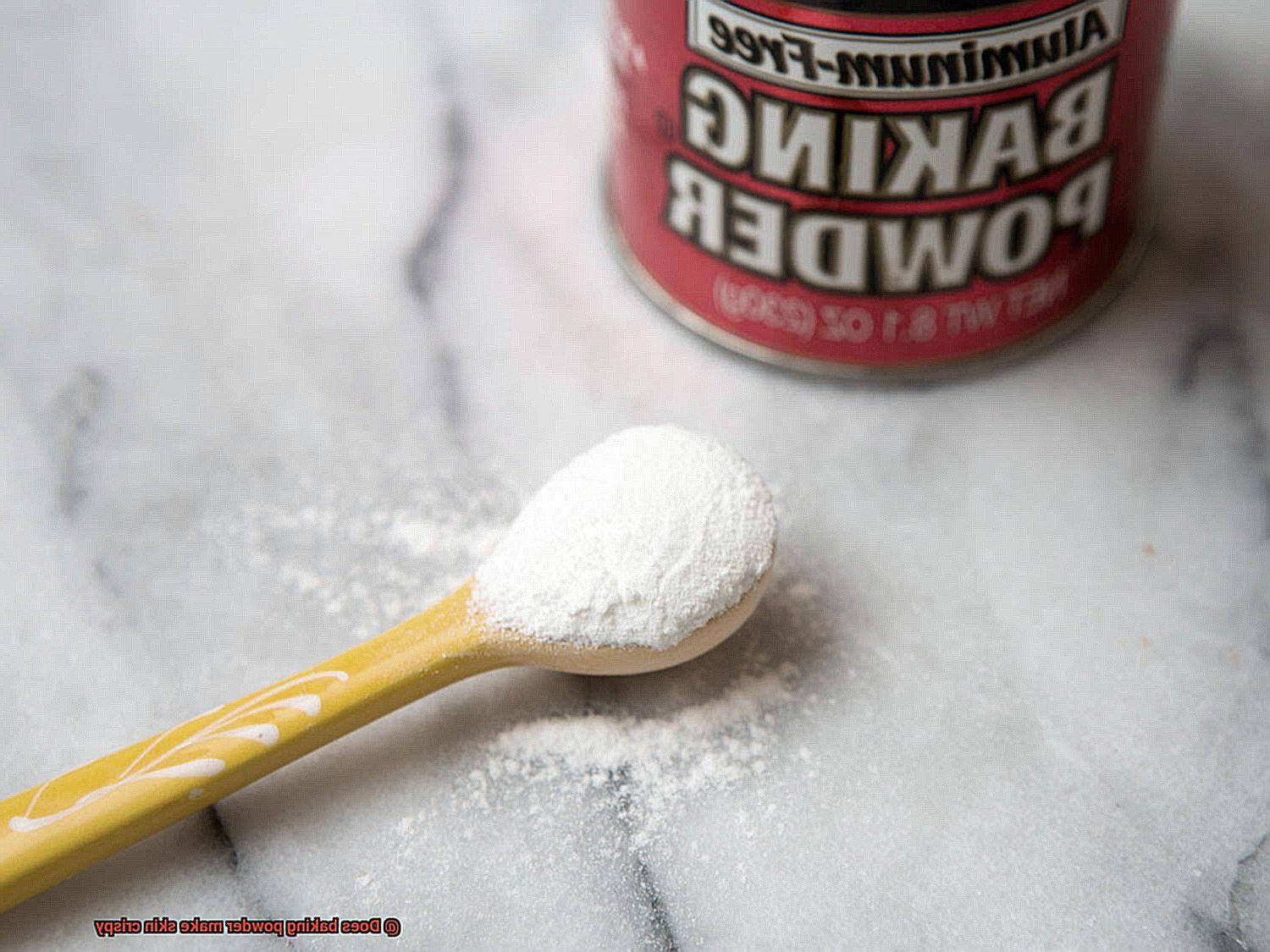
First and foremost, let’s talk about the importance of temperature. When it comes to cooking poultry, high heat is the key ingredient. The heat causes the fat under the skin to render and the skin to dehydrate, resulting in a satisfyingly crispy texture that we all crave. So, don’t be afraid to crank up that oven or grill.
But what about baking powder? It can be a fantastic addition to achieve an even crispier texture by creating an alkaline environment on the surface of the skin. This environment causes Maillard reactions to occur faster, resulting in a deeper browning and an even crispier texture. However, baking powder should be used sparingly and alongside other techniques such as dry brining or air drying the bird before cooking. Using too much baking powder can result in a bitter taste and a chalky texture that nobody wants.
Speaking of dry brining and air drying, these techniques can work wonders for enhancing both flavor and texture of your poultry dish. Dry brining involves rubbing salt onto the skin and letting it sit in the fridge for several hours or overnight. This draws out excess moisture and helps to create a crispy skin. Air drying involves leaving the bird uncovered in the fridge for several hours before cooking, which also helps to draw out moisture and create a crispy texture.
How to Know When the Food is Ready
Here are some tips to help you achieve deliciously crispy meals every time:
Consider the Cooking Temperature
Baking powder works by reacting with acids in the food to create carbon dioxide bubbles that help create a crispy texture. To ensure optimal results, be sure to follow the recipe’s recommended cooking temperature. If the temperature is too low, the bubbles may not form properly, and your food may not get as crispy as desired.
Pay Attention to Cooking Time
Overcooking can cause the skin to become tough and chewy, while undercooking may not allow enough time for the baking powder to work its magic. Experiment with different cooking times based on the specific recipe and type of food being cooked to achieve perfect results.
Look for Visual Cues
Visual cues can also be helpful in determining when the food is ready. For example, when cooking chicken with baking powder, the skin should turn a golden brown color and feel crispy to the touch. Vegetables may become slightly charred and tender when they are ready. Keep an eye on these visual cues to achieve perfectly crispy textures.
Use a Thermometer
While visual cues can be helpful, it’s always a good idea to use a thermometer to check the internal temperature of your food, especially for larger cuts of meat. For poultry, the internal temperature should be 165°F (74°C), while beef and pork should be cooked to an internal temperature of 145°F (63°C) for medium-rare and 160°F (71°C) for medium. This ensures that your food is safe to eat and cooked perfectly.
Practice Makes Perfect
Achieving crispy skin with baking powder takes practice and experimentation. Don’t be afraid to try different cooking methods, temperatures, and oils to find the perfect combination for your favorite fried foods. With patience and practice, you’ll soon become an expert at achieving perfectly crispy textures.
ChtmaDZg1Kg” >
Conclusion
To achieve that perfect crunch on your fried or baked foods, baking powder can be a game-changer. Its leavening properties create tiny bubbles that burst during cooking, resulting in a crispy texture outside while keeping the inside moist and tender. But beware, using too much baking powder can lead to an unpleasant taste and texture.
Not only does baking powder help with crispiness, but it also aids in browning by triggering the Maillard reaction – the same process that occurs when we brown food on the stove or in the oven. However, achieving that golden-brown color requires choosing the right oil, cooking temperature, and technique.
While mastering crispy skin with baking powder takes practice and experimentation, there are some tips you can follow to ensure success. Opt for double-acting aluminum-free baking powder, let your meats rest after seasoning with baking powder before cooking, and pay attention to visual cues for perfectly cooked meals every time.

